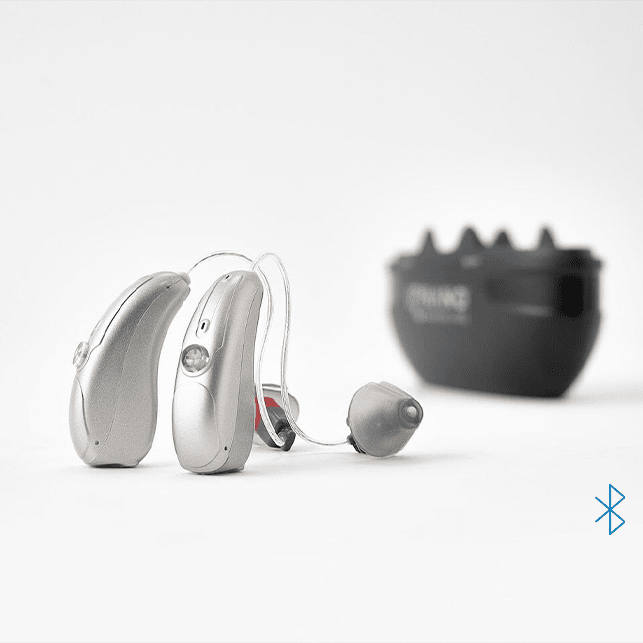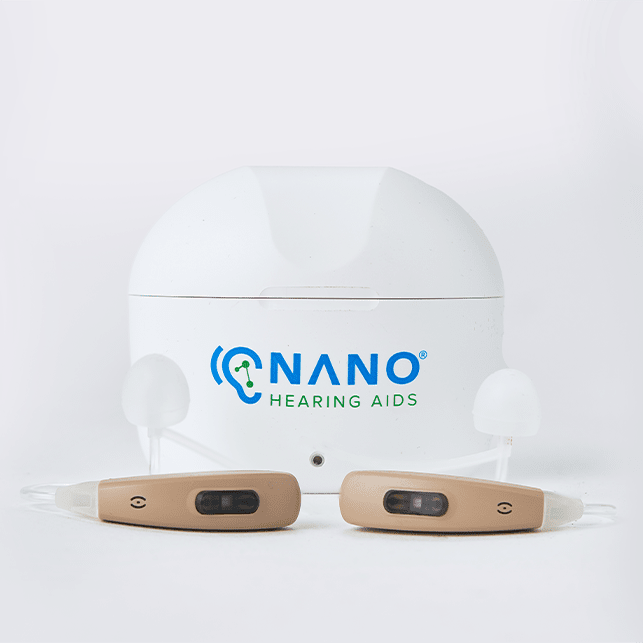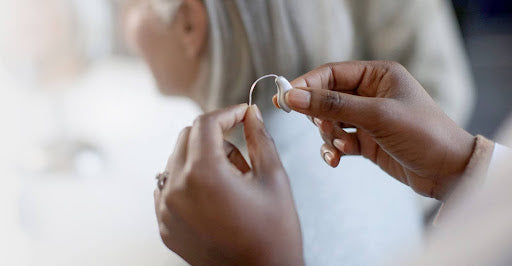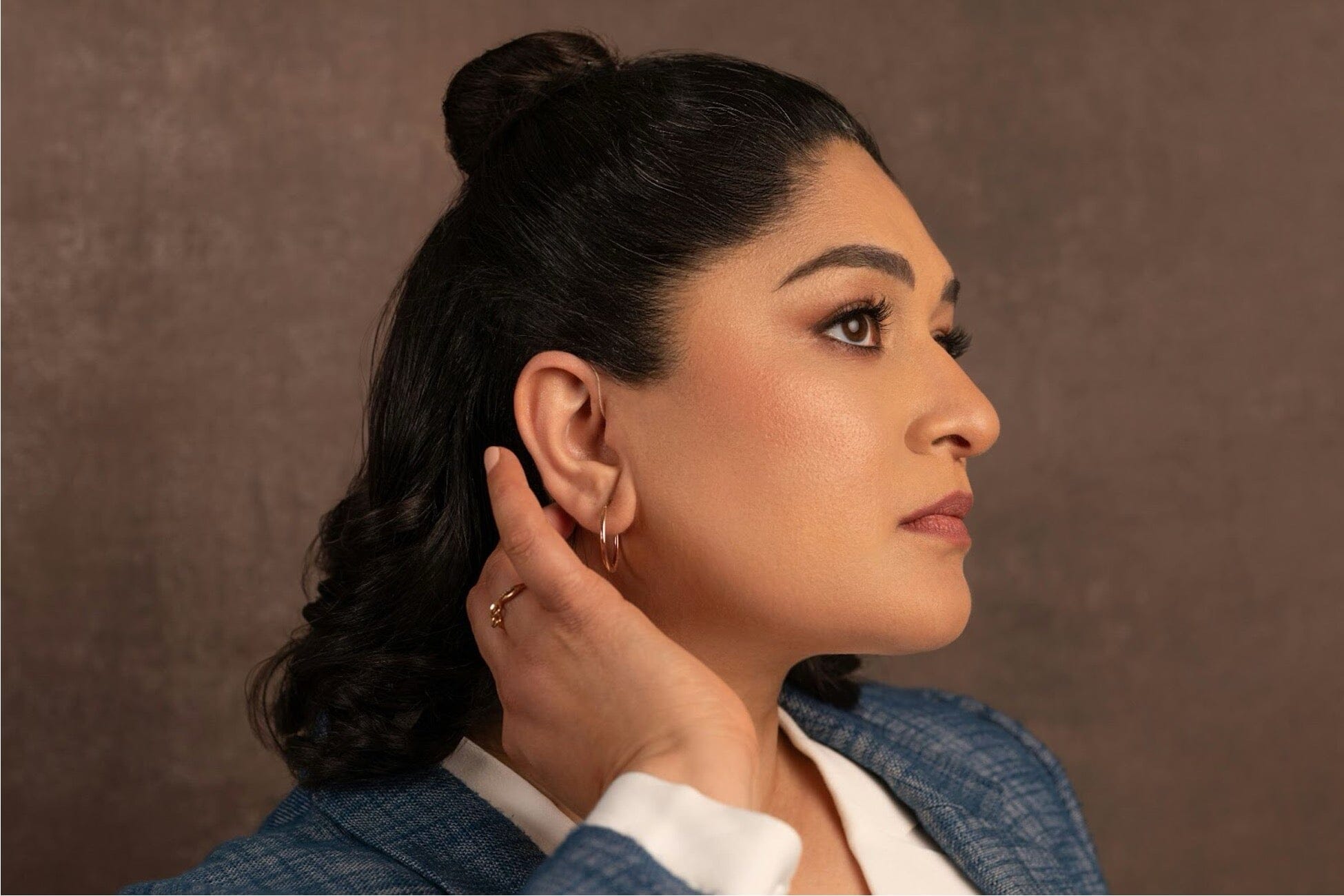Key Takeaways
- Hearing aids designed for active lifestyles improve communication, safety, and participation in physical activities for individuals with mild to moderate hearing loss.
- Preferred hearing aid styles for active users include CIC, ITE, and IIC models, which provide a secure fit and minimize interference with activity gear like helmets and glasses.
- Essential features for active hearing aid users include water and dust resistance, long battery life, directional microphones, and wireless connectivity for added convenience.
- Staying active with hearing aids not only enhances hearing but also promotes mental and physical well-being by reducing risks of social isolation and cognitive decline.
Nano Hearing Aids offers affordable, OTC solutions tailored for adults over 18 with perceived mild to moderate hearing loss, featuring rechargeable batteries, customizable settings, and discreet designs to support an active, connected lifestyle.
The Importance of Hearing Aids for Active Lifestyles
Hearing aids are invaluable for staying active and connected while managing hearing loss, empowering individuals with mild to moderate hearing loss to participate in physical activities safely and confidently. Whether it’s running, hiking, or participating in group sports, hearing aids designed for active lifestyles enhance communication and awareness, improving both engagement and safety.
Hearing aids improve auditory clarity while also offering broader health benefits: remaining active with hearing aids can mitigate risks associated with untreated hearing loss, such as social withdrawal, depression, and cognitive decline. By enabling physical engagement and social interaction, these devices promote mental well-being and help users maintain a vibrant lifestyle.
Preferred Styles for Active Users
For active individuals, the design and fit of hearing aids play a critical role. Styles like completely-in-canal (CIC), in-the-ear (ITE), and invisible-in-canal (IIC) are preferred due to their secure fit and discreet appearance. These models are less likely to interfere with helmets, glasses, or activity gear, making them ideal for those with high-energy lifestyles.
Key Features to Look For
Active users require hearing aids with features meeting for their needs, such as:
- Water, Dust, and Moisture Resistance: Ensures durability in various environments.
- Long Battery Life: Reduces interruptions during extended activities.
- Directional Microphones and Noise Reduction: Enhances clarity in noisy surroundings.
- Wireless Connectivity: Supports streaming from smartphones and other devices for added convenience.
NANO Hearing Aids are FDA-registered, Class I devices. Our OTC hearing aids are designed for individuals over 18 years of age with perceived mild to moderate hearing impairment. With prices starting at just $297, they offer a viable solution for those looking to improve their hearing without breaking the bank.
Selecting Hearing Aids for Your Activities
- Cycling or Running: Opt for models with wind noise reduction for improved clarity.
- Swimming or other water activities: Waterproof equipment is essential.
- Gym Workouts: Compact and sweat-resistant designs ensure comfort and longevity.
5 Best Hearing Aids for an Active Lifestyle
1. Most Comfortable Hearing Aid: NANO CIC
Nano First Ear Plus CIC delivers a discreet and comfortable fit for all-day use.
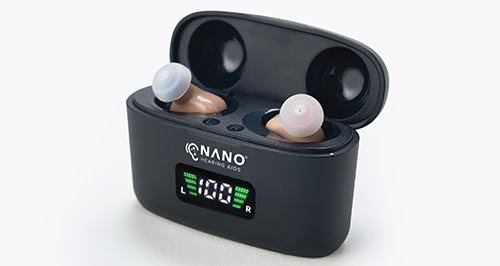
The NANO First Ear Plus CIC model is rechargeable with up to 18 hours of battery life, discreet, and equipped with feedback cancellation and noise reduction technology.
Key features include:
- Rechargeable battery
- Feedback cancellation and noise reduction
- Digital sound processing and adaptive technology
- Directional microphones
2. Best for Connectivity: Starkey Hearing Aids
Starkey hearing aids promote seamless connectivity for a modern hearing experience.
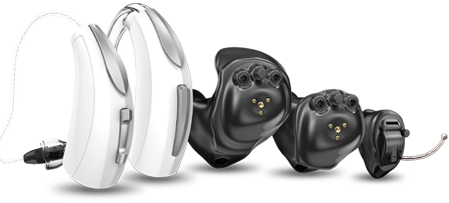
Starkey hearing aids excel in connectivity and sound clarity, suitable for seniors leading active lifestyles. Models like Evolv AI, Start Hearing One, and Livio Edge AI offer advanced features:
- AI-powered sound adjustments
- Bluetooth connectivity and health monitoring
- Language translation and smartphone integration
- Sleek, compact design
3. Water-Resistant: Phonak Lyric
Phonak Lyric is equipped with water-resistant hearing aid technology for an active lifestyle.
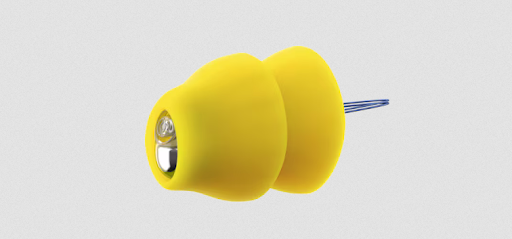
Phonak Lyric is 100% invisible and can be worn 24/7, fitting entirely inside the ear canal. It’s particularly suited for continuous use without the need for battery changes and is effective for tinnitus relief.
Key features:
- Clear and natural sound quality
- No batteries required
- Water-resistant, not waterproof
4. Best Noise Cancelling: Widex MOMENT
Widex MOMENT has advanced noise-canceling features for clear sound in any environment.

Widex MOMENT stands out for its natural sound quality and advanced technology. It offers features suitable for active users, including:
- PureSound technology
- Long battery life
- Direct streaming with iOS and Android
- Rechargeable options with discreet charging solutions
5. Best Lightweight: Lexie Lumen
Lexie Lumen is a lightweight hearing aid designed for all-day comfort and performance.

Developed by Lexie Hearing, part of the hearX Group, the Lexie Lumen is tailored for mild to moderate hearing loss and offers:
- Adjustable settings and Bluetooth compatibility
- Dual microphones for clear sound
- Durable design with nano-coating for active lifestyles
- One-year warranty and Lexie Care support
Maintenance for Active Lifestyle Hearing Aids
- Daily Cleaning: Remove earwax and dust using a soft cloth or specialized tool.
- Proper Storage: Use a dehumidifying case to protect against moisture.
- Battery Management: For rechargeable models, follow manufacturer guidelines to preserve battery health. Regular maintenance extends the life of your equipment and ensures consistent performance.
Why Choose Nano Hearing Aids?
Nano Hearing Aids combine affordability with high-quality features for everyday use.
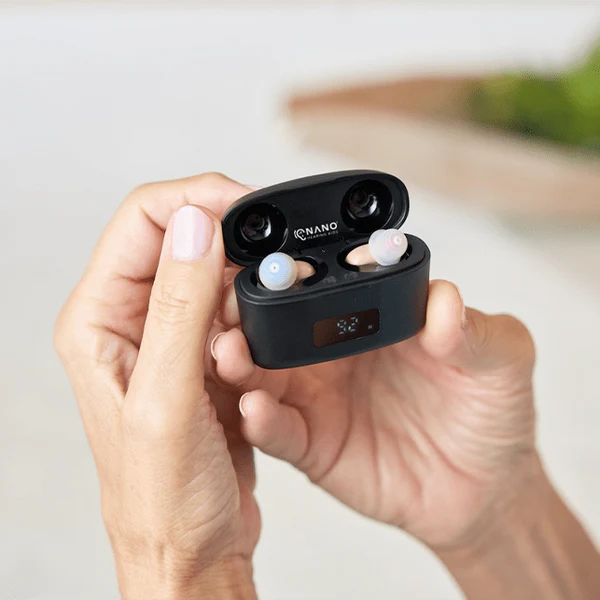
At Nano Hearing Aids, we provide high-quality, over-the-counter hearing solutions tailored for adults over 18 with perceived mild to moderate hearing loss. With over seven years of experience, we prioritize affordability and convenience by offering devices that are easy to order online.
Our hearing aids feature customizable settings, rechargeable batteries, and virtually invisible designs, ensuring they fit seamlessly into your active, connected lifestyle. Our hearing aids provide the clarity and independence needed for outdoor adventures or daily routines, helping you thrive in any environment.
Frequently Asked Questions (FAQ)
What styles of hearing aids are best for active lifestyles?
Completely-in-canal (CIC), in-the-ear (ITE), and invisible-in-canal (IIC) hearing aids are suitable for active individuals due to their secure fit, discreet design, and minimal interference with helmets, glasses, or other activity gear.
What features should I look for in hearing aids for active use?
Active users should prioritize hearing aids with water, dust, and moisture resistance, long battery life, directional microphones, noise reduction, and wireless connectivity for streaming audio or handling calls.
Can hearing aids help improve overall health for active individuals?
Yes, hearing aids promote social interaction, physical activity, and mental well-being by reducing the risks of untreated hearing loss, such as social isolation, depression, and cognitive decline.
How should I maintain hearing aids for an active lifestyle?
Regular maintenance includes daily cleaning to remove earwax and dust, using a dehumidifying case for storage, and following manufacturer guidelines for battery care to ensure longevity and consistent performance.
Why are Nano Hearing Aids a good choice for active users?
Nano Hearing Aids are affordable, over-the-counter devices designed for adults with mild to moderate hearing loss. Our models feature rechargeable batteries, customizable settings, and nearly invisible designs, making them a practical and convenient choice for active lifestyles.

